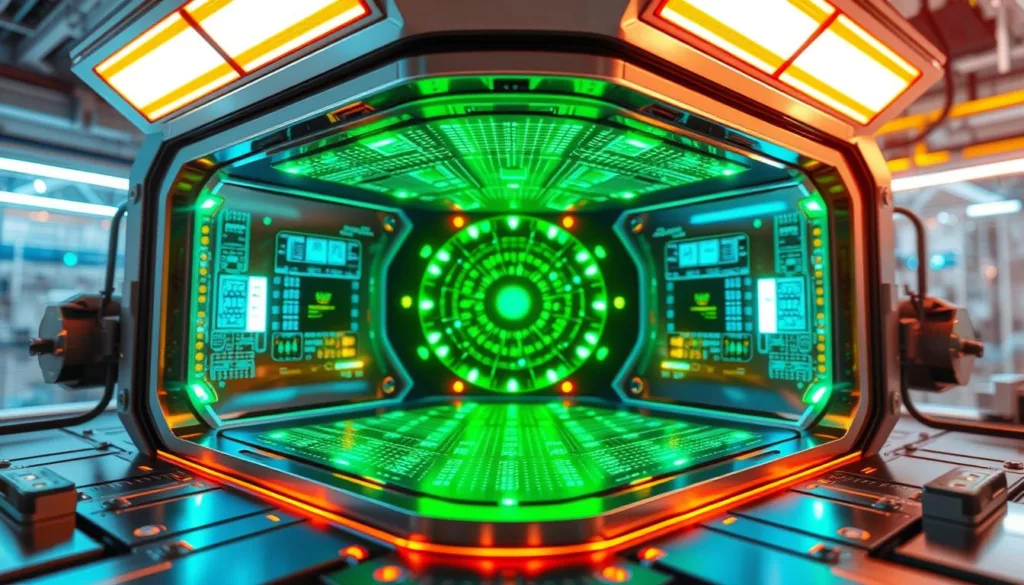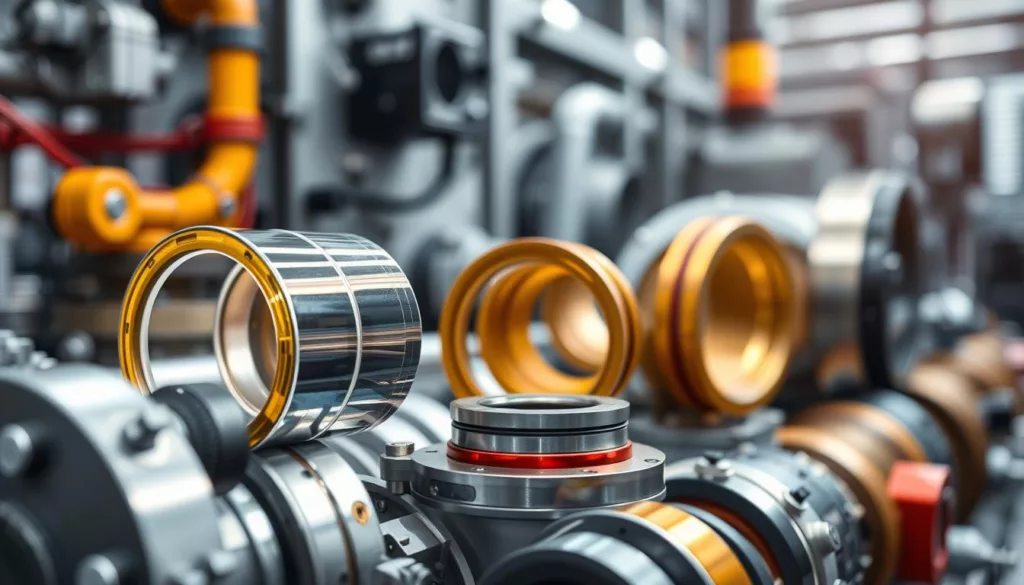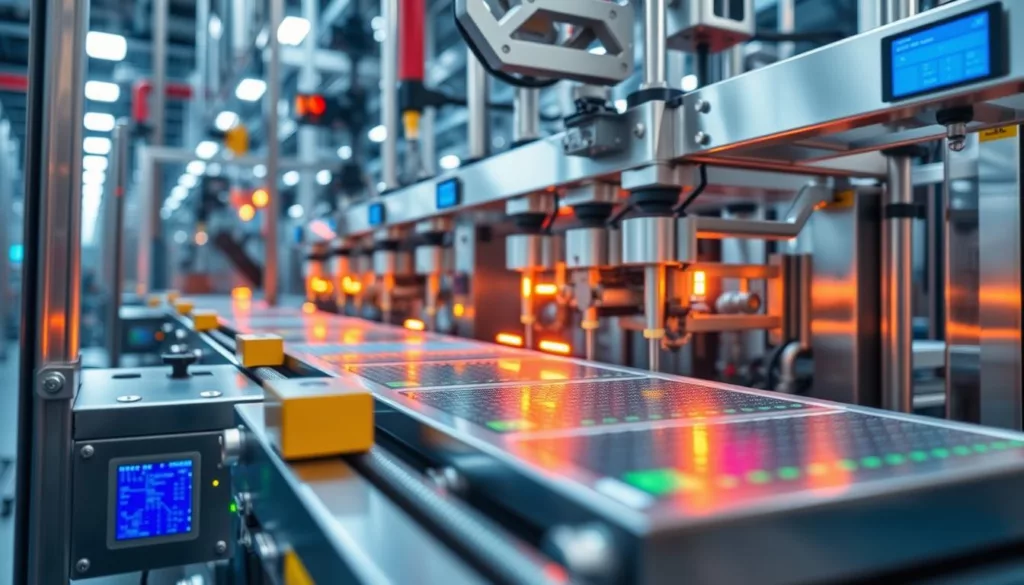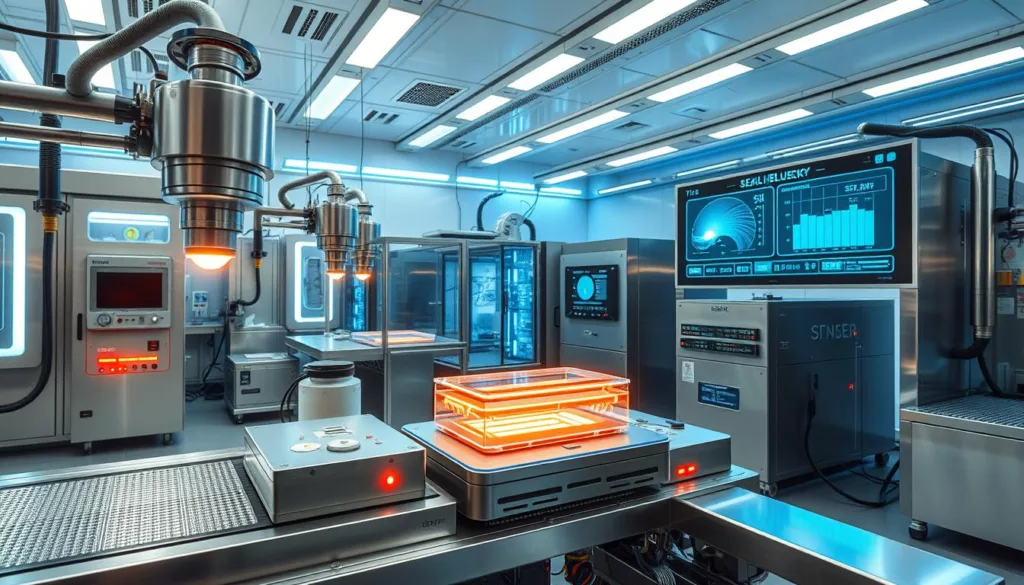At XJCSENSOR, we lead in developing innovative sealing sensor technology. These technologies are changing industrial applications. They increase operational efficiency, safety, and performance.
Sealing sensors are crucial for detecting leaks. This keeps products safe and maintains their integrity. We focus on customized, quality sensor sealing solutions. Our expertise and innovation guide us. Learn more by visiting our website.
Key Takeaways
- Innovative sealing sensor technology enhances operational efficiency.
- Prevention of leaks is critical for maintaining product integrity and safety.
- XJCSENSOR is dedicated to providing customized sensor sealing solutions.
- Extensive technical expertise drives innovation in sealing sensor development.
- Improved safety measures lead to increased performance across industries.
Understanding Sealing Sensor Technology
Sealing sensor technology is crucial in industrial settings. It involves devices that keep an eye on machinery seals. These sensors ensure seals work perfectly. This prevents leaks, avoiding unplanned stops and big financial losses.
Definition and Importance
Sealing sensors are key in many industries. They check seal integrity non-stop, maintaining equipment’s performance and life. They are vital in fields like manufacturing and healthcare, where safety is crucial. Poor seal function can cause big problems. So, advanced sealing technology with these sensors is essential. It makes operations stronger and improves product quality.
Components of Sealing Sensors
The power of sealing sensors comes from their parts. These core items ensure accurate and trustworthy performance. The main parts are:
- Pressure Sensors: They track pressure on seals to spot any leaks.
- Temperature Sensors: They keep an eye on the heat around seals, keeping them safe.
- Contactless Sensing Technologies: These use special ways to check seals without touching them, making them last longer.
Together, these parts make sealing sensors reliable for industrial use. Adding top-notch materials and clever designs greatly ups their reliability.
Innovative Sealing Sensors in Industrial Applications
Innovative sealing sensors have changed how industries work. They are key in industries like automotive, aerospace, and pharmaceuticals. These sensors make things more efficient and safe thanks to their adaptability and precision.
Overview of Use Cases
Sealing sensors are used in many ways, making sure things run smoothly and reliably. Let’s look at some examples:
- Engine management systems in cars use precise sealing to prevent leaks and save fuel.
- In manufacturing, hydraulic machines use sensors to watch seals and avoid downtime.
- The pharmaceutical industry relies on these sensors to keep areas free from contamination, ensuring high-quality products.
Benefits for Different Industries
Different industries gain from high-tech sealing. Here’s how:
| Industry | Benefits |
|---|---|
| Automotive | Fewer leaks mean better performance and lower emissions. |
| Aerospace | Better safety and reliability because seals stay intact even in tough conditions. |
| Pharmaceuticals | Meets strict rules and makes products safer. |
Advanced Sealing Technology Developments
Sealing sensor technology keeps getting better. It focuses on being more durable, accurate, and functional. Using advanced polymers and composites has really helped. These materials can handle tough conditions and make sensors last longer.
Adding Internet of Things (IoT) features has changed sealing technology a lot. It allows for real-time checks and fixes before problems get big. This keeps manufacturing going smoothly without any stops.
These improvements in sealing sensors give companies an advantage. They make operations run better, which is key for businesses wanting to improve. For more info on these sensors, check out XJCSENSOR. They are at the forefront of sensor technology.
Key Advantages of High-Performance Sealing Technology
In the world of manufacturing, high-performance sealing technology stands out. It offers key benefits that boost efficiency. These technologies get better all the time, thanks to new sealing sensor developments. They bring innovative designs and improved functions.
Enhanced Durability
High-performance sealing technology is known for its durability. It’s made to handle tough conditions, making equipment last longer. This means lower costs for replacing parts and more productivity in important jobs. These solutions use advanced materials. So, sealing sensors work well, even when it gets very hot or there’s a lot of pressure.
Improved Accuracy and Reliability
For industrial work, being accurate and reliable is crucial. This is especially true when precise measurements are needed. High-performance sealing technology uses smart ways to keep outputs consistent. This cuts down on errors. For jobs where following strict rules is a must, our sealing sensors make sure everything runs smoothly. They meet high standards for quality and performance.
Sealing Sensor Applications in Manufacturing
Sealing sensors are key in improving manufacturing. They are used in different industries to check seal quality in packaging and machinery. These sensors help factories keep up their quality and lower the risk of seal problems.
Niche Industry Applications
Sealing sensors have unique roles in many manufacturing areas, such as:
- Food and Beverage: They check packaging seals to stop contamination.
- Pharmaceuticals: They ensure packaging is sterile with precise sealing.
- Automotive: They test seals in important engine parts.
Integration with Automation Systems
Combining sealing sensors with automation boosts efficiency. This combination allows:
- Real-time monitoring of seals.
- Gathering data for quality decisions.
- Lesser mistakes thanks to automatic warnings and reports.
This not just makes work smoother but also keeps manufacturing to a high standard. So, sensor sealing solutions add to productivity and trust in many industries.
Sealing Sensor Technology Advancements
The industry is seeing big changes in sealing sensor technology. These changes are reshaping how sensors work in different settings. A move toward miniaturization is happening, making sensors smaller. They still work just as well but take up less room. This makes complex systems more efficient and saves on space.
Now, sealing sensors come with new, advanced features. These improvements make the sensors more sensitive and perform better. They are more accurate at detecting important details, making systems more reliable. Development forums are now focusing more on adding data analytics to sealing sensor technology. This gives users valuable insights they can act on.
The use of micro-electro-mechanical systems (MEMS) technology is key in these advancements. With MEMS, we can create innovative sealing sensors that work better and do more. This pushes past what traditional sensors could do. As this technology gets better, we expect to see even more impressive changes in the industry.
Sealing Sensor Industry Trends to Watch
The sealing sensor industry is changing fast. There’s a big demand for better sealing sensor tech. This is because of more automation and the need for higher safety in different areas.
Growth Projections and Market Insights
The sealing sensor market is expected to grow a lot soon. This growth comes from several factors:
- Increased focus on operational efficiency and cost reduction.
- Integration of smart technologies in manufacturing processes.
- Growing awareness of safety regulations leading to enhanced sealing sensor applications.
These trends are important to know for businesses. Investing in sealing sensor tech helps with performance and being sustainable during changes.
Emerging Technologies
Smart sensors with machine learning are a big step forward. They bring a lot of new abilities:
- Predictive analysis, enabling preemptive maintenance and reducing downtime.
- Enhanced data collection for improved operational insights.
- Remote monitoring and control features for seamless integration within automated systems.
With these new techs, businesses can improve how they work. They can lower risks and do better overall.
Factors Driving Innovation in Sealing Sensor Solutions
Innovation in sealing sensor solutions comes from many important sources. Advances in materials technology are key. They lead to sensors that are tougher and more adaptable.
New, improved materials help create innovative sensors. These meet the changing needs of many industries. The demand for automation is also fueling innovation. Industries want to make things faster and with fewer mistakes. Automation means sealing sensors have to be advanced and dependable.
There is a big push for sustainability too. Companies are being asked to be more eco-friendly. Innovative sealing sensors reduce waste and use less energy. This makes companies more green.
Putting money into research and development is crucial. It helps find new uses for sealing sensors that improve how businesses operate. Working with universities and experts speeds up this progress. The result is smarter, more useful sensor solutions.
- Advances in materials technology
- Increased demand for automation
- Focus on sustainability
- Investment in research and development
Understanding these innovation drivers is vital. It lets businesses use the latest in sealing sensor technology. By staying current, companies can work better and stay ahead in their markets.
Challenges in Sealing Sensor Development
Advancements in sealing sensor technology bring various challenges. These challenges can slow down progress. It’s important to consider technical and market hurdles.
Technical Limitations
Technical limitations make it hard to apply sealing sensor technology effectively. We face several key challenges:
- Calibration Issues: It’s tough to get accurate readings, which is crucial for sensor performance.
- Environmental Resilience: Sensors need to survive harsh conditions. Creating sensors that can do this is not easy.
- Integration Complexity: Fitting sensors into existing systems without major changes is a major challenge.
Market Adoption Barriers
For sealing sensor technology to be widely used, we must overcome market barriers. The main obstacles include:
- High Costs: The high initial costs can prevent organizations from using new technologies.
- Lack of Awareness: Many do not know about the benefits of sealing sensors, causing reluctance.
- Insufficient Technical Knowledge: A gap in technical understanding makes it hard for users to adopt advanced sensors.
Future of Sealing Sensors: Innovations on the Horizon
The future of sealing sensors looks bright, with big advancements on the way. As the world changes, these sensors will become more important. They will combine old features with new tech like artificial intelligence and machine learning.
Here are the main trends to watch:
- Robust designs: These will make sensors last longer and work better.
- Advanced analytics: This will allow for monitoring in real time and smarter decisions.
- Predictive maintenance: This will help guess when things might break to keep them running smoothly.
- Process optimizations: This will make things more efficient, cutting costs and boosting quality.
We’re determined to lead in sealing sensor technology advancements. Our goal is to bring in new sensors that improve efficiency in various industries.
We aim not only to meet today’s demands but also to prepare for future challenges. This way, we can ensure growth that lasts and reliable performance.
| Trend | Description | Impact |
|---|---|---|
| Robust Designs | They last longer and can handle tough conditions. | Sensors have a longer life and cost less to maintain. |
| Advanced Analytics | They use current data for better understanding. | This leads to smarter choices and less downtime. |
| Predictive Maintenance | These methods predict when equipment might fail. | It results in more working time and lasting use. |
| Process Optimizations | Making operations more efficient through tech. | This means better efficiency and quality control. |
Best Practices for Implementing Sealing Sensor Solutions
Implementing sealing sensor tech calls for a careful approach. This ensures it works best. Using best practices for sealing sensors makes a big difference in how well the tech works. It also helps with success in industrial settings.
Selection Criteria
Choosing the right sealing sensors involves a few important steps:
- Application-specific Needs: Find out what you need for your project to pick the right type of sensor.
- Compatibility: Make sure the sensor fits with what you already have.
- Environmental Resilience: The sensor should be tough enough to handle things like water, heat, and chemicals.
Maintenance and Optimization Strategies
To keep sealing sensors working well for a long time, they need regular care. Here are some tips:
- Routine Calibration: Check the sensors often to make sure they’re accurate.
- Software Updates: Update the sensor software regularly for better performance and safety.
- Periodic Assessments: Check on your sensors at regular times to adjust to new needs.
| Criteria | Importance | Actions |
|---|---|---|
| Application-specific Needs | Ensures optimal functionality | Identify requirements during the selection process |
| Compatibility | Facilitates seamless integration | Conduct compatibility assessments |
| Environmental Resilience | Enhances sensor longevity | Test sensors under relevant conditions |
| Routine Calibration | Preserves accuracy | Establish a calibration schedule |
| Software Updates | Improves performance and security | Implement regular update protocols |
| Periodic Assessments | Adapts to operational changes | Plan assessments at defined intervals |
Conclusion
Sealing sensor technology is critical in today’s industries. It boosts performance, responsibility, and safety. With these sensors, companies can spot issues early. This reduces downtime and makes processes better. The progress in sealing tech helps industries meet today’s challenges.
Looking ahead, we are dedicated to helping our clients. We offer custom sealing solutions for better efficiency and sustainability. Our expertise helps businesses use sealing sensors wisely to reach their goals.
The innovation in sealing sensor technology keeps moving forward. By working together, we make sure reliable sealing sensors lead to better productivity. This prepares us for success in a constantly changing competitive world.






